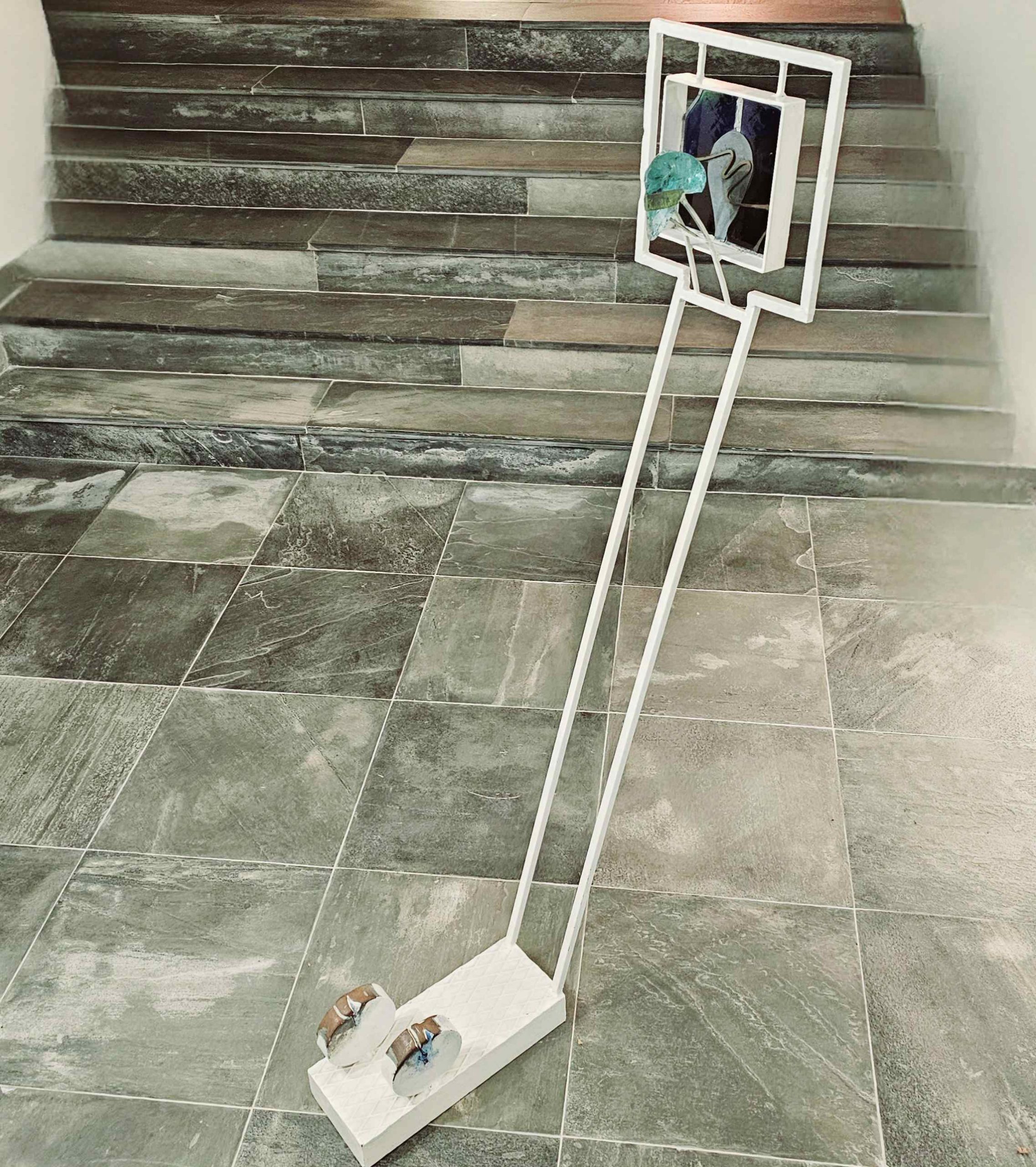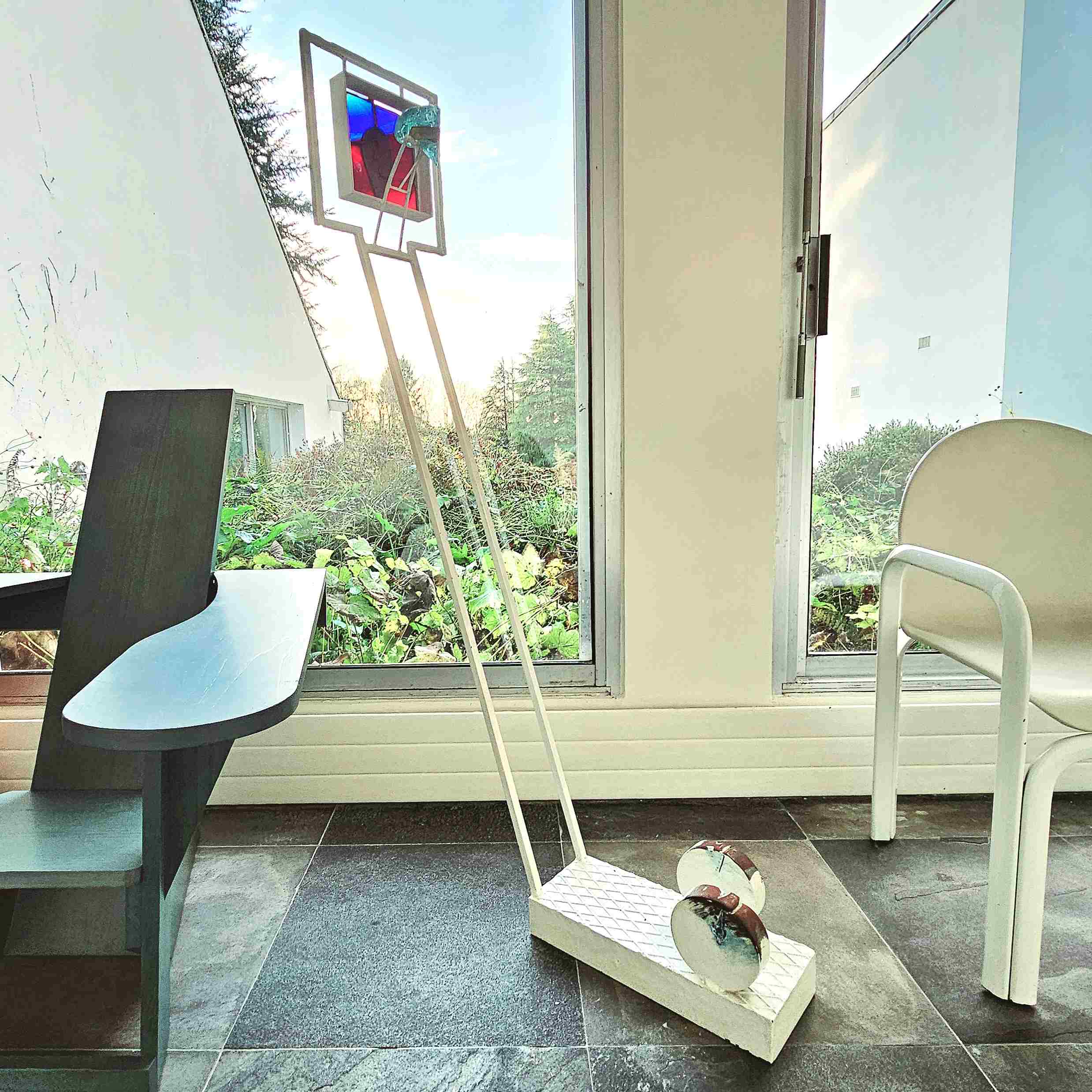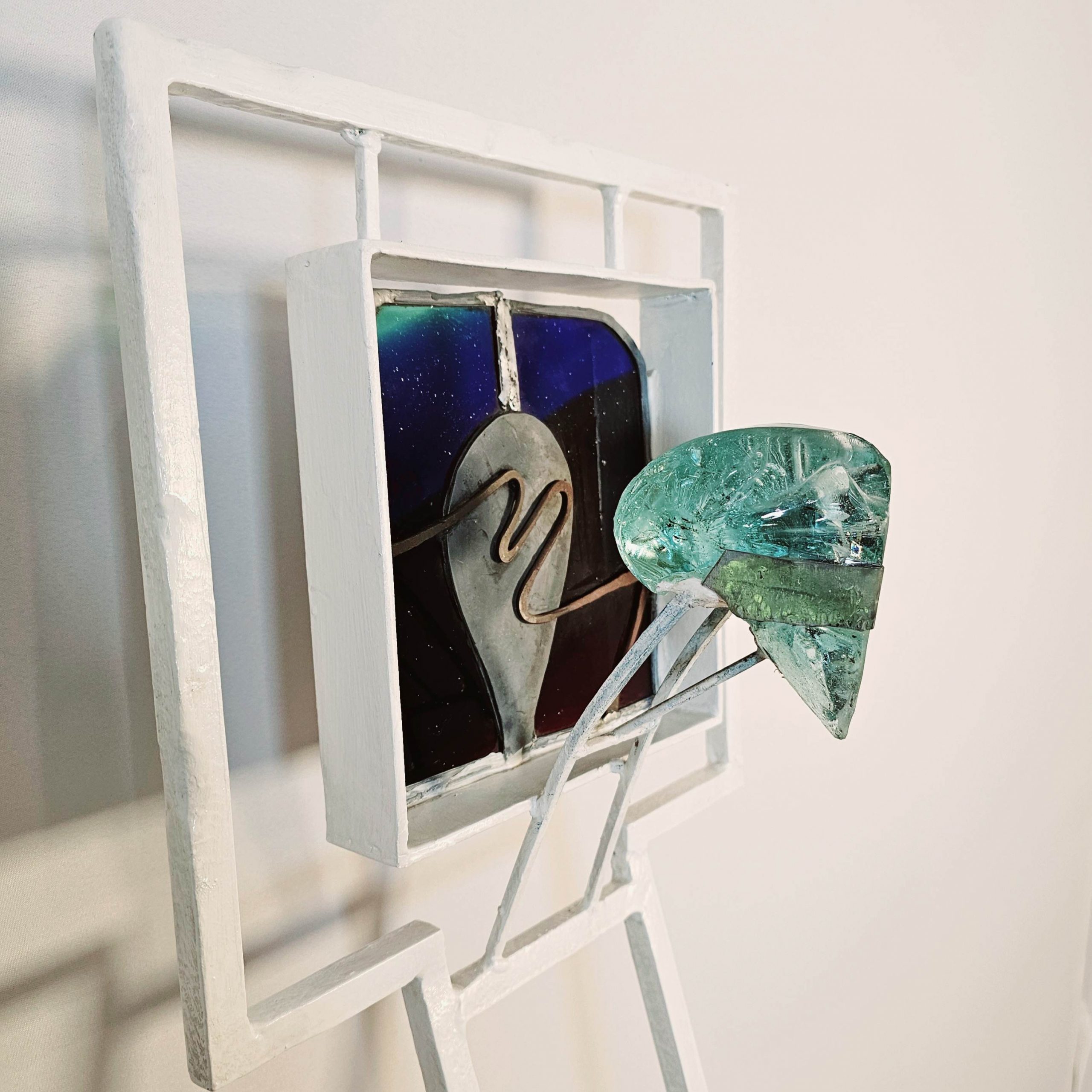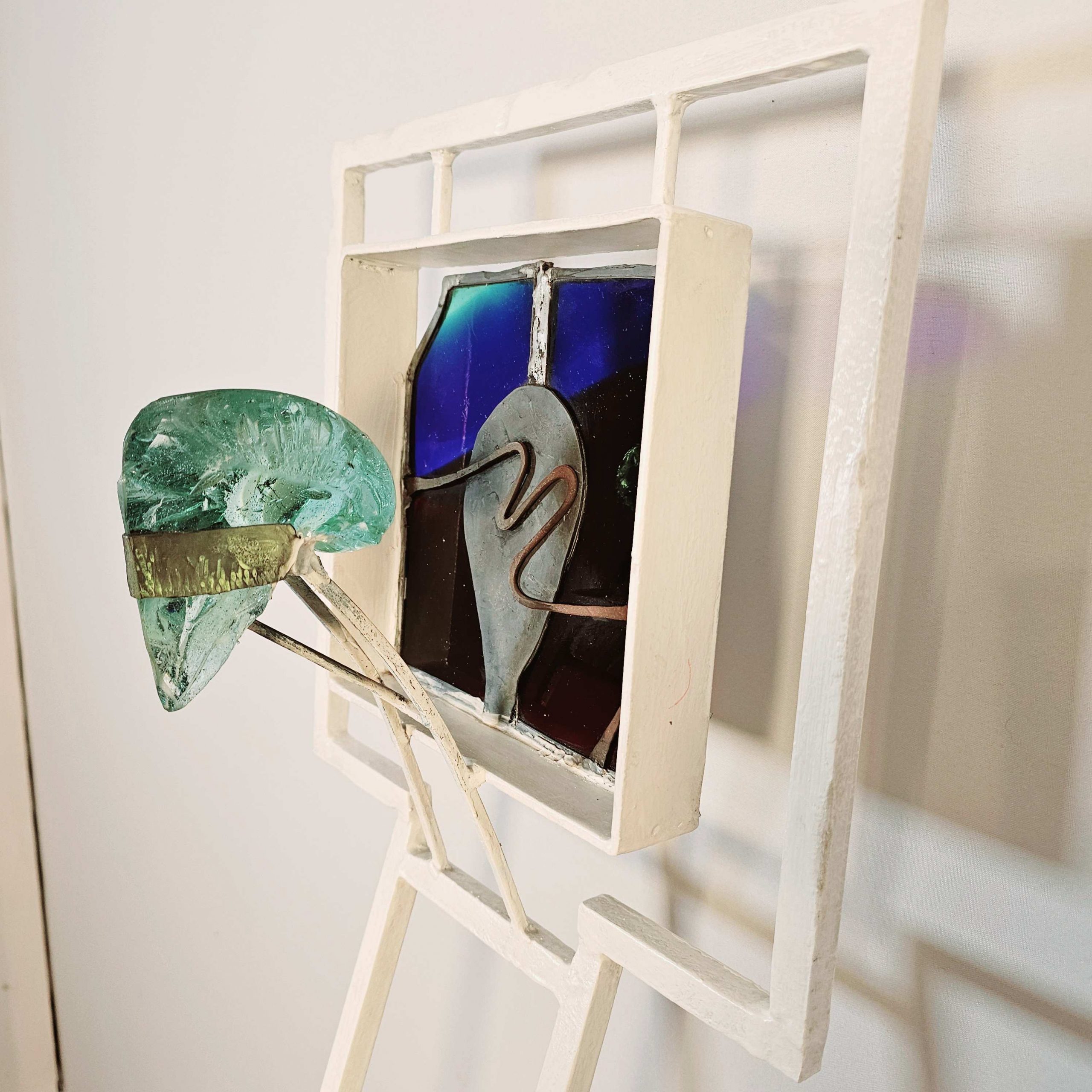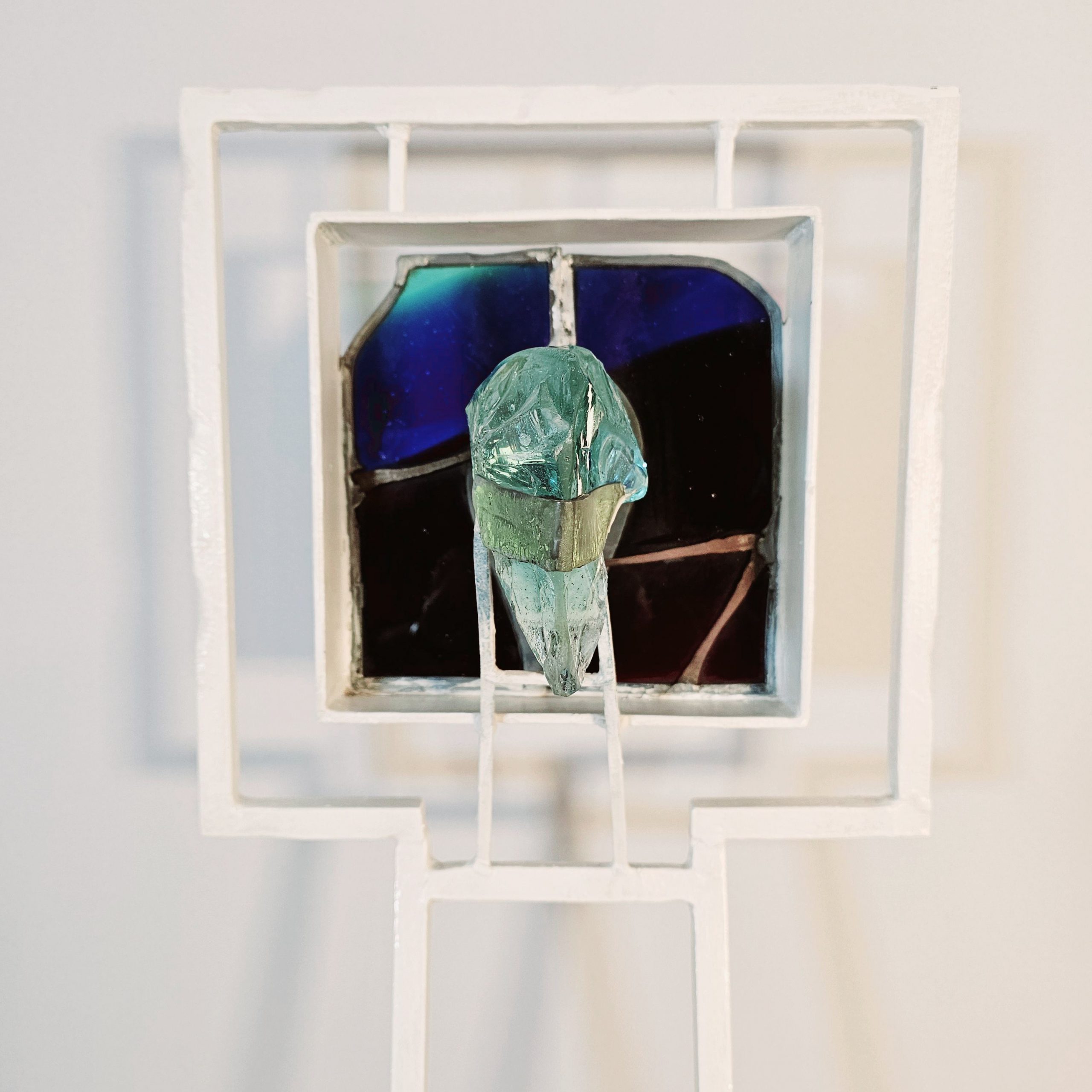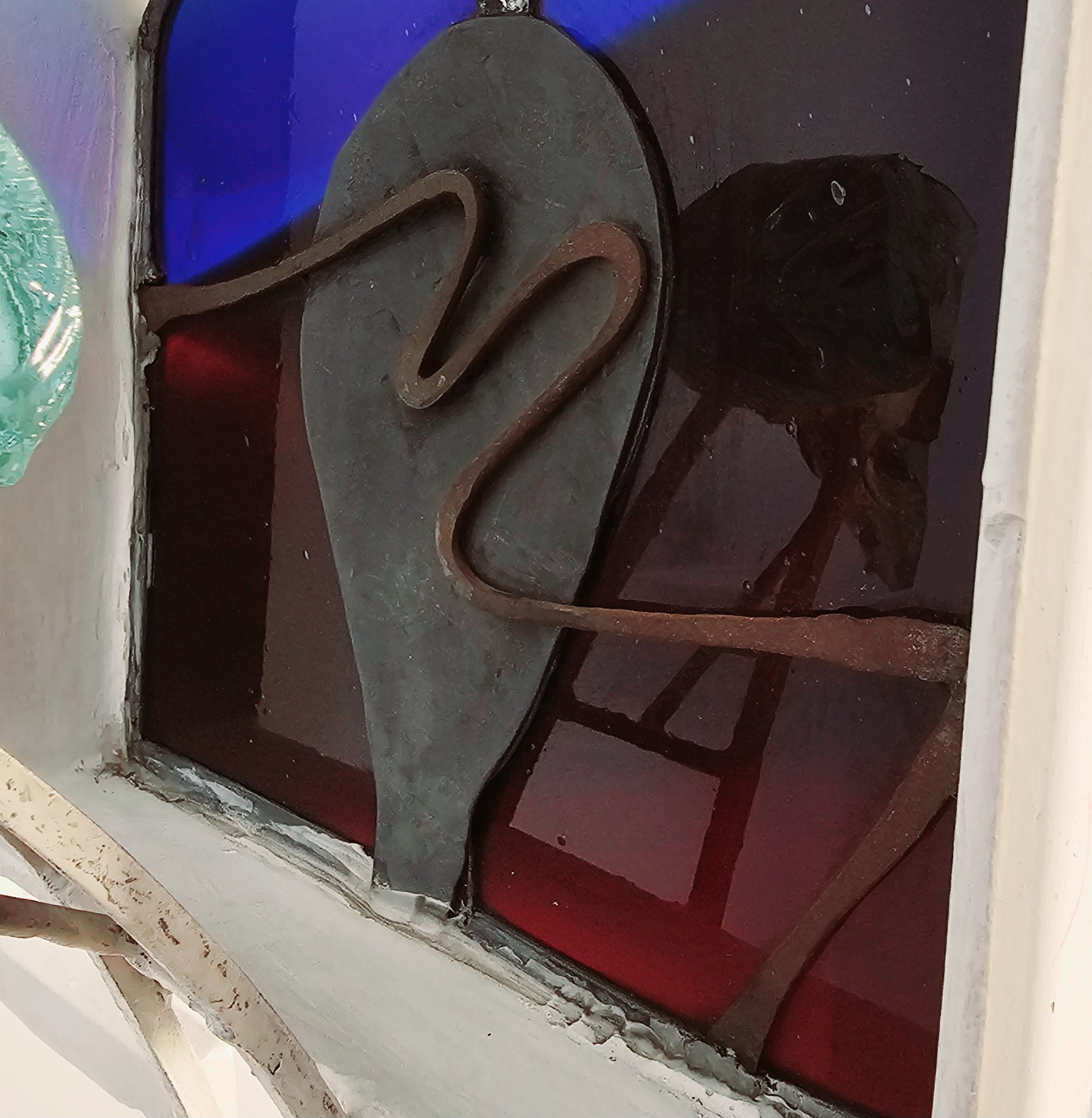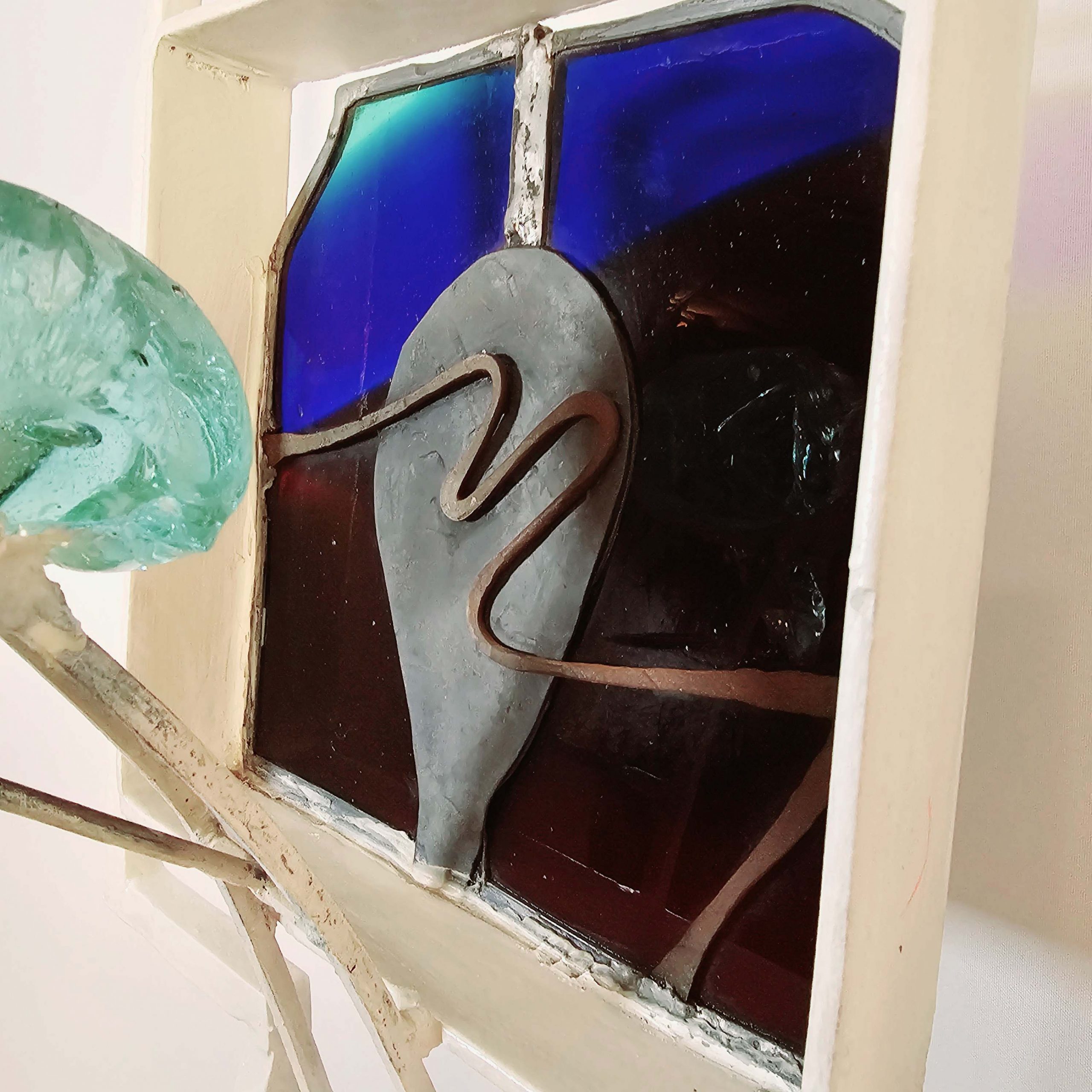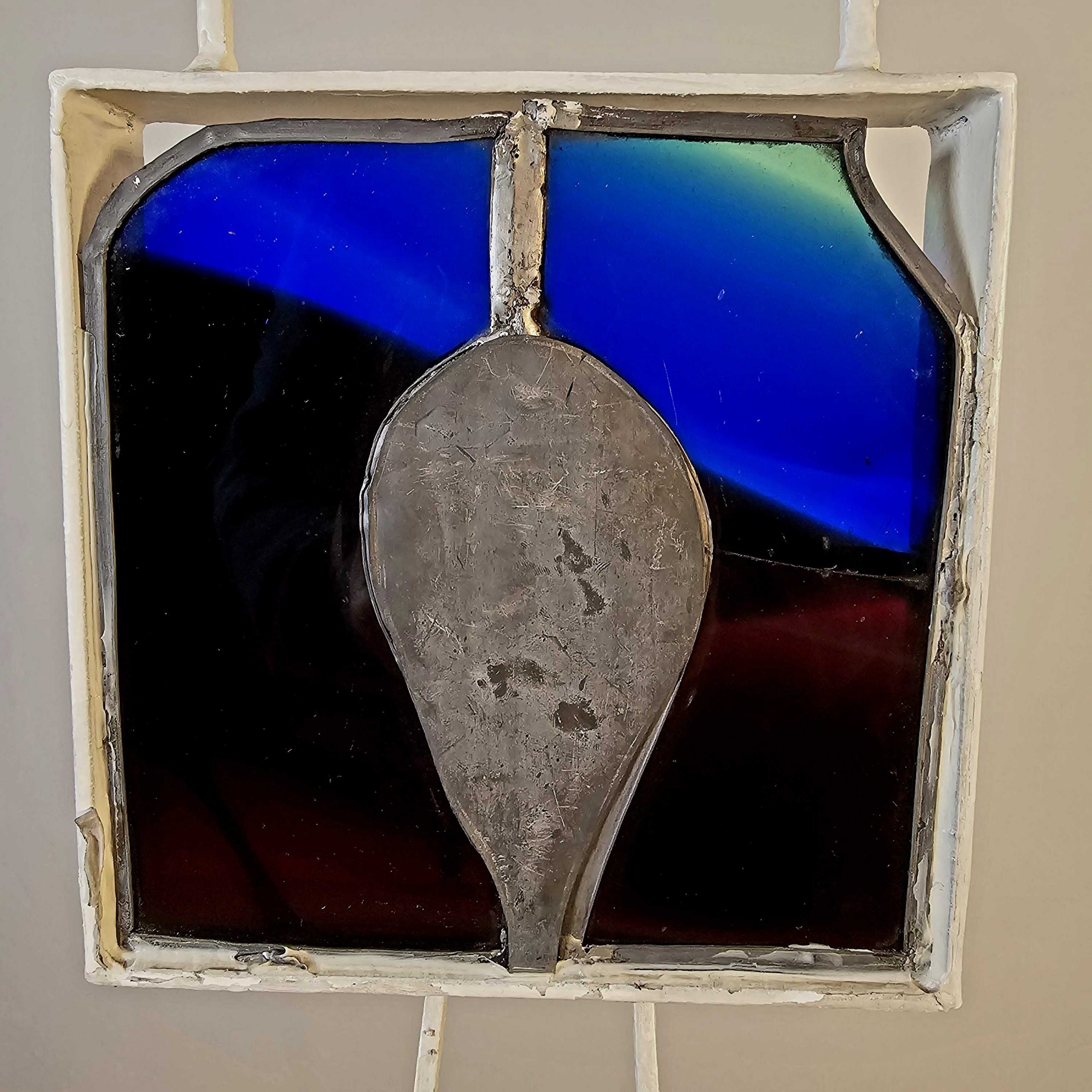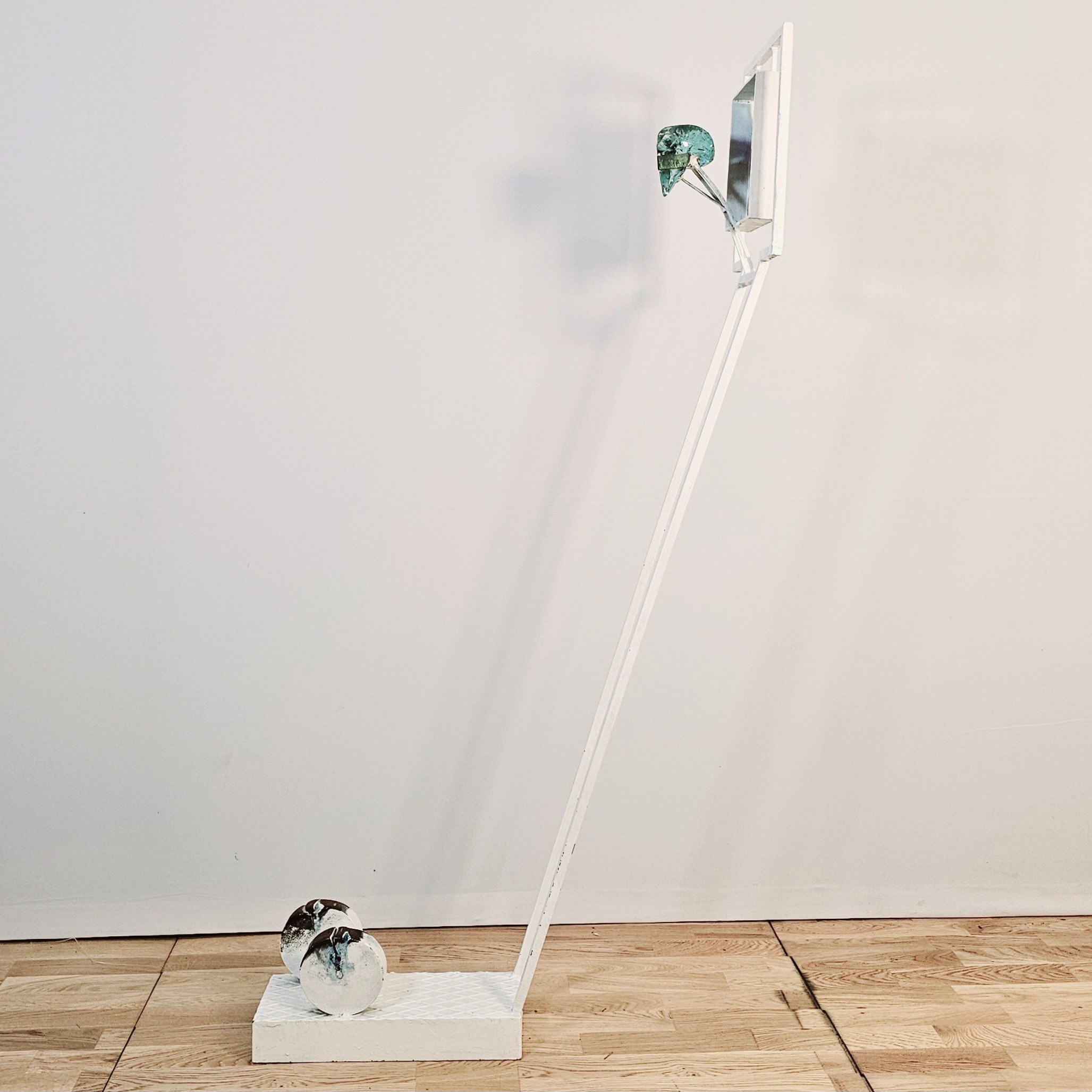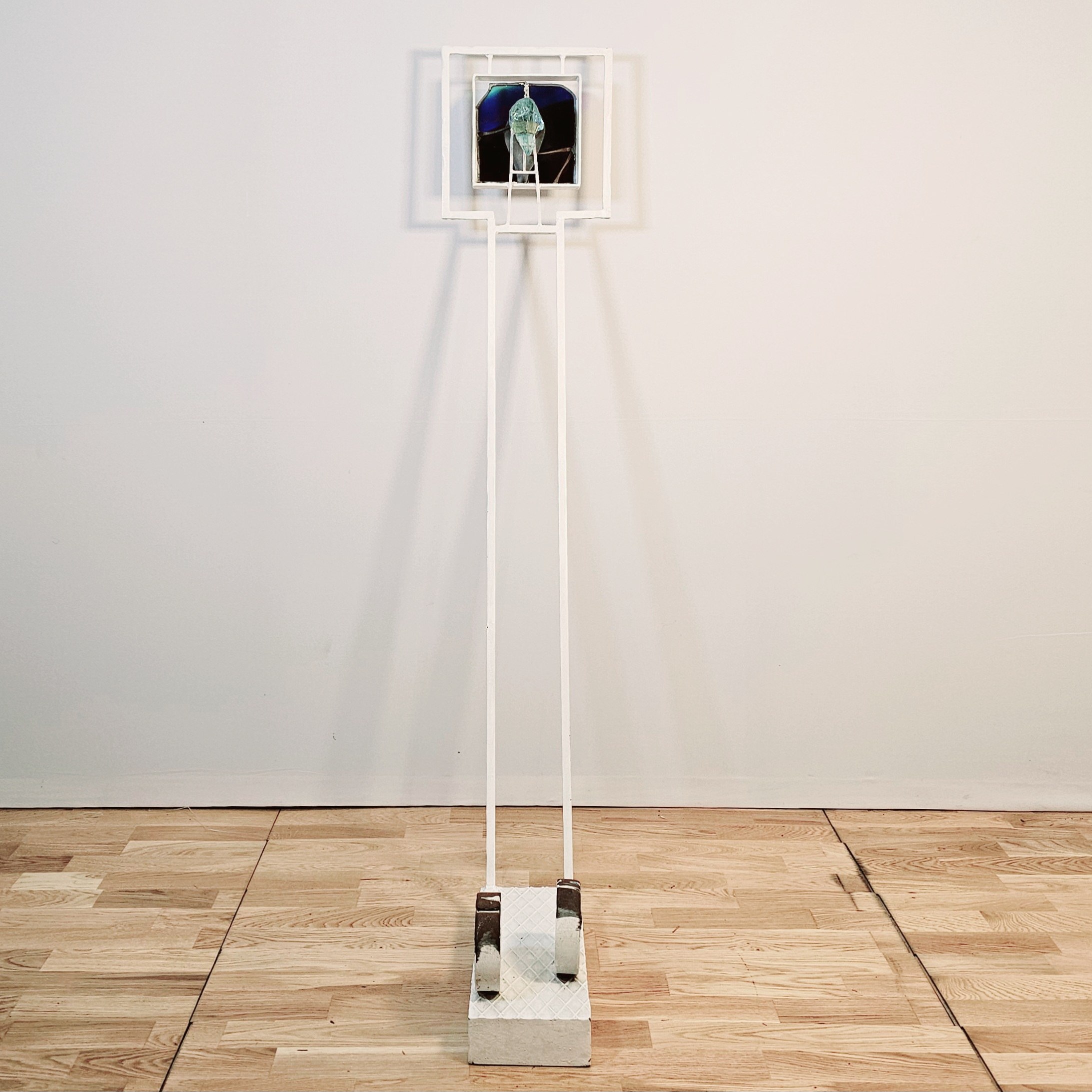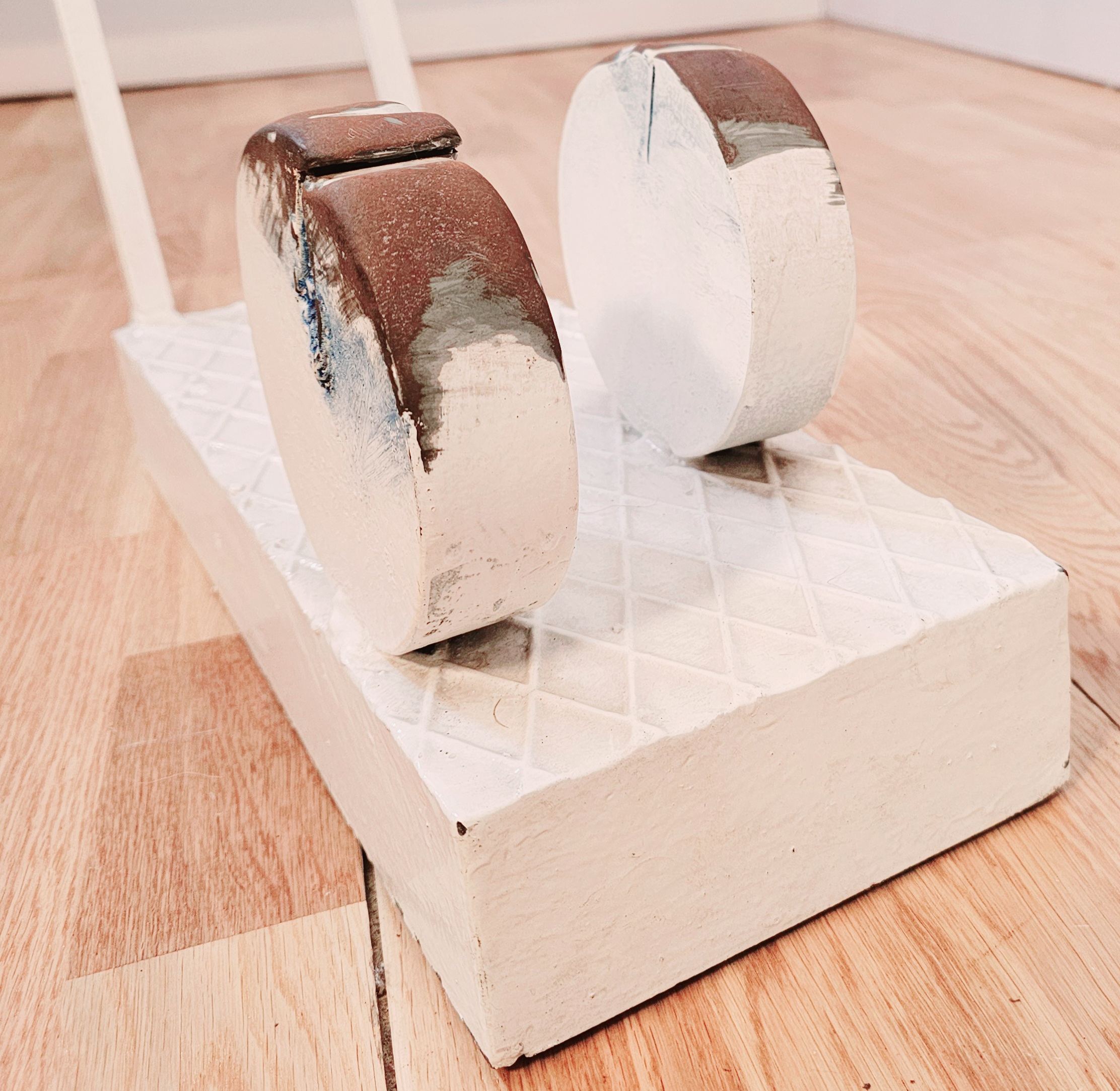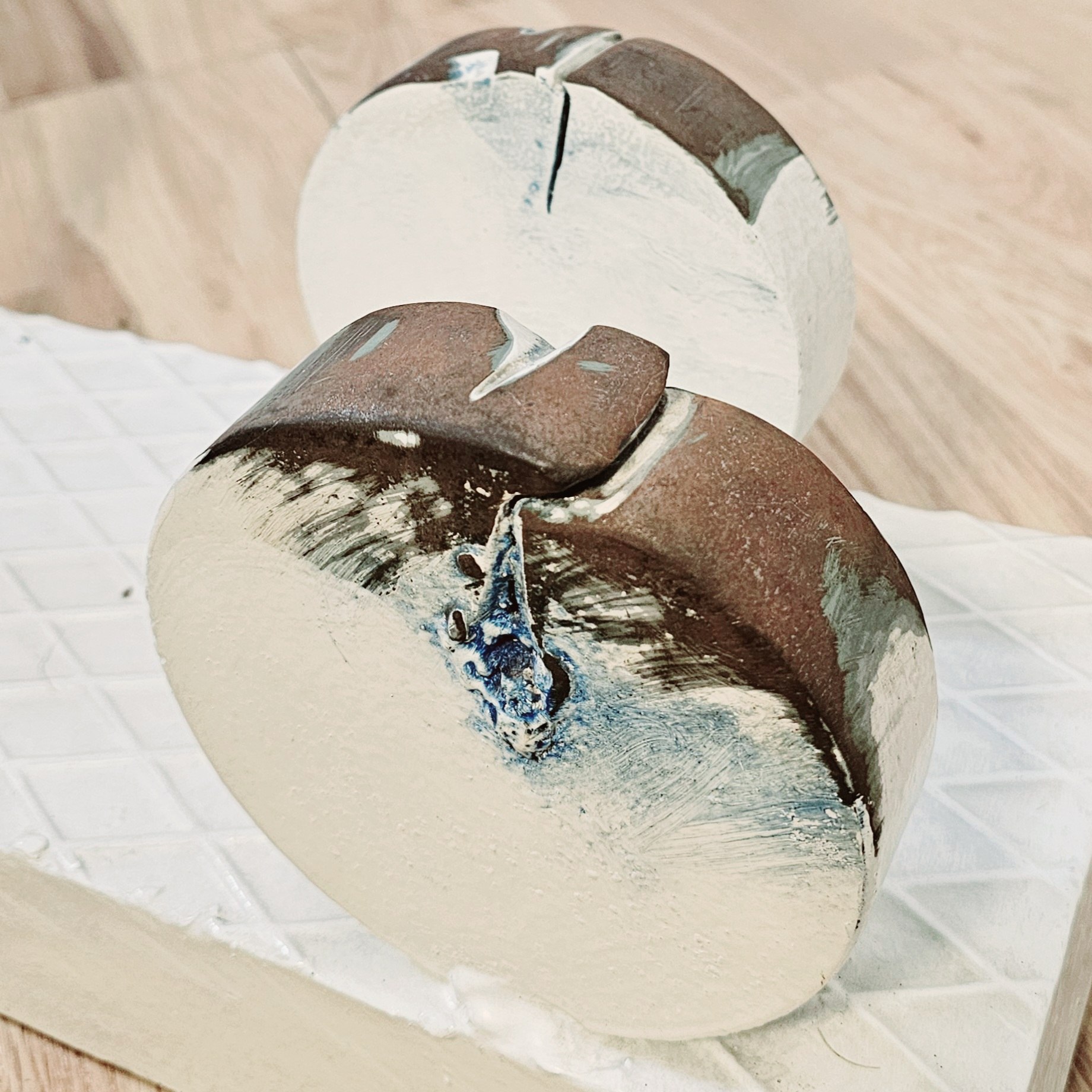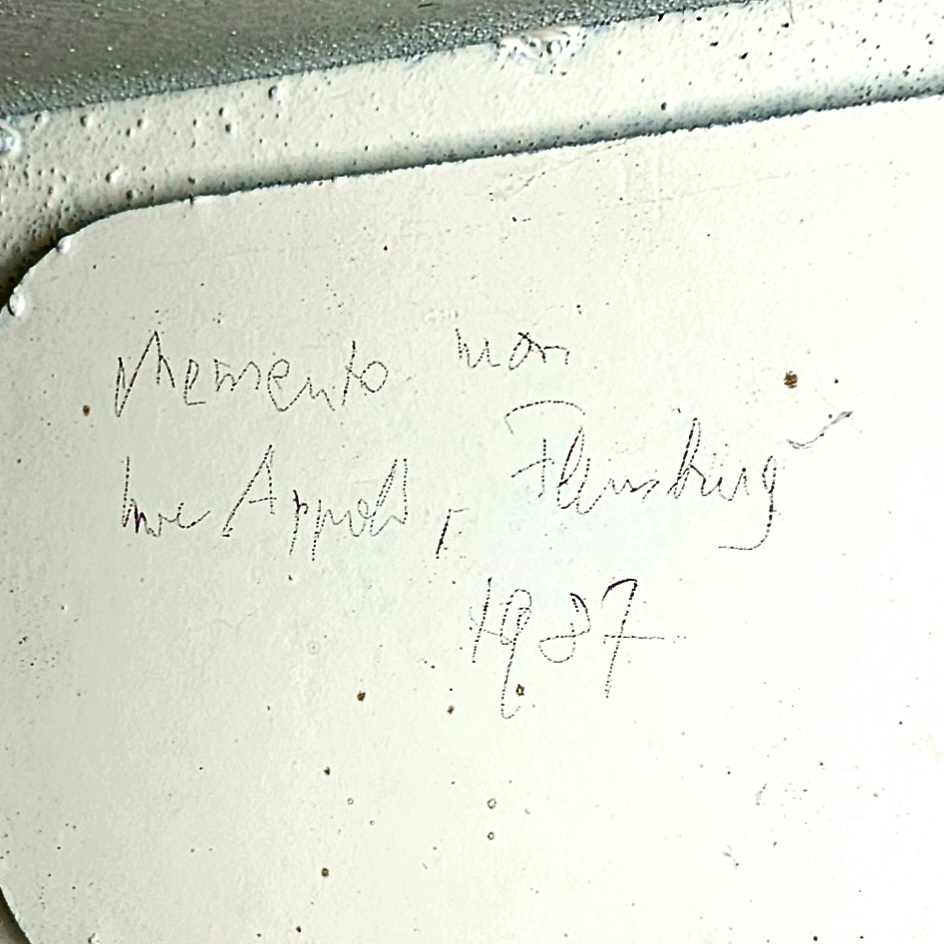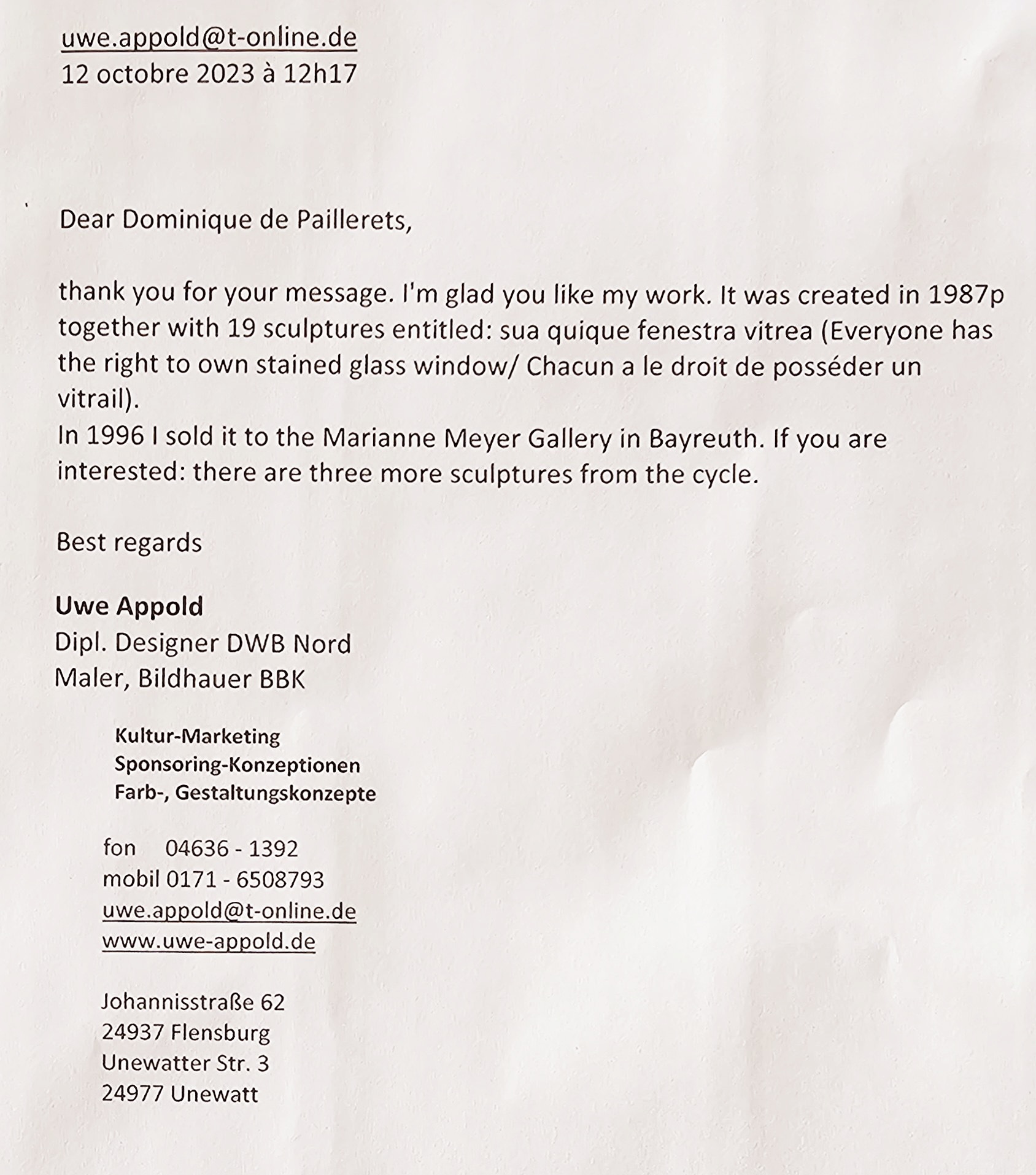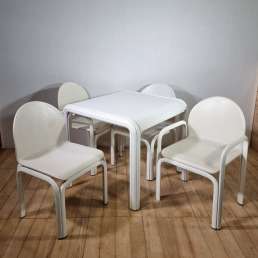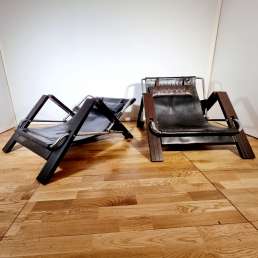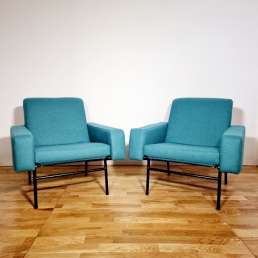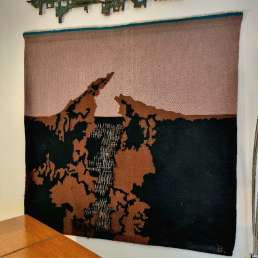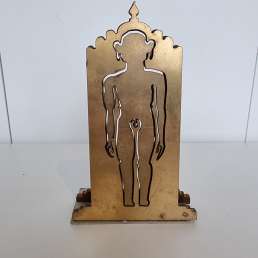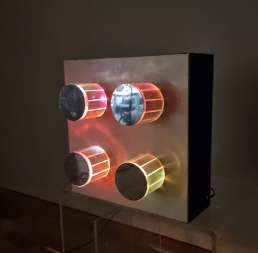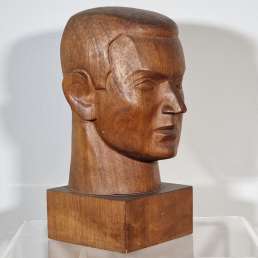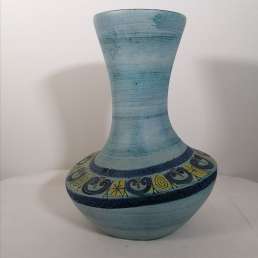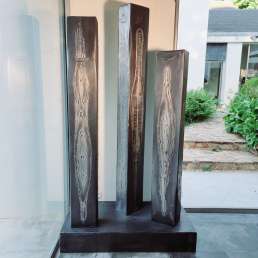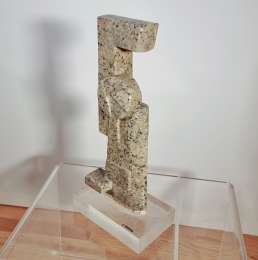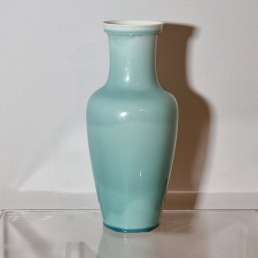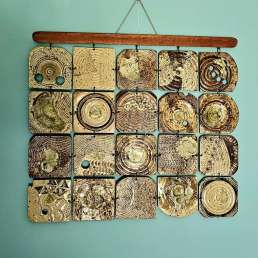Uwe APPOLD, Memento mori, 1987, glass and painted metal
Description
What I like
First of all, I like the sculpture itself, a clever balance between this white painted metal, with its angular shapes, and this central mass of cut Nile blue glass, embedded in this sculpture, in front of a two-tone stained glass window. Its title allows us to read a skull in front of a partially burning sky, an intention to question us about the Final Ends: perhaps there is even a Redemption?
The title of the series “Everyone has the right to have a stained glass window” is an invitation to bring the spiritual into everyone.
We can see there the reminder of the relics, but why not also the skull of Hamlet, as well as the great theory of memento mori created by artists for so long?
In any case, we have here a work which questions, in its opposition between the fragile/glass and the solid/metal, between white and color….
Finally, I like to have a sculpture by an important artist, Uwe Appold, recognized and exhibited internationally, generally monumental works: here, although quite tall, we have a work that can easily fit into an apartment.
I like the fact that Uwe Appold’s work has an important intellectual and even moral part, but that the work that emerges from it is filled with plastic beauty!
Technical description
Uwe APPOLD (born in 1942)
Memento mori
White lacquered metal, stained glass window enclosed in lead, blue crystal cut with a chisel.
Signed, dated and located under the base “Memento mori, Uwe Appold, Flensburg, 1987”.
One of a kind piece.
Crack on the back of the stained glass window, minimal lack of lacquer.
This work is part of a cycle of 20 works created by Uwe Appold in 1987 entitled “Sua Quique denesta Vitrea” (“Everyone has the right to have a stained glass window”.
In 1996, it was sold to the Galerie Marianne Meyer in Bayreuth (email from the artist dated October 12, 2023).
The sculpture is composed of a thick rectangular base with a top decorated with diamonds; on one side, two thick discs forming a counterweight are cracked and intentionally rusty and speckled with blue; on the other, two oblique rods support a large square accommodating a smaller square decorated with a blue and red stained glass window, surrounded by lead, in front of which is presented a blue crystal cut with a chisel and representing a skull.
Dimensions and weight
Height: 149 cm – Width: 31,5 cm – Depth: 62,5 cm
Weight: 25 kg
Mix & Match
Here we have a sculpture which questions us, present by its complex spatial structure, but whose restricted polychromy, essential for the understanding of the work, allows it to integrate numerous spaces.
The most obvious is to associate it with furniture with simple shapes: thus, the blue of the pair of G10 armchairs by Pierre Guariche will recall the blue of the stained glass window, while the ecru buckle of the same G10 armchair associated with the Troïka stool will present it with a neutral cohabitation, each room being able to develop its own lines.
We can also think of the Orsay ensemble by Gae Aulenti with its virginal white and calm curves.
But this sculpture can also dialogue with the softened angles of the walnut desk of the Bank of France and give it an intellectual touch; and the geometric lines it offers can also find a parallel with the triangular lines of the Grass Hopper armchairs by Sonja Wasseur.
It is true that a work of art, as long as it is of good quality, can stand alongside most artistic creations: this is why I will not hesitate to hang Enrique Broglia’s Composicion metallica on the walls, which integrates metal differently, or the very strong work of Edgard Pillet, Composition 1951-1952, whose geometric abstraction will be able to play a different score than the sculpture of Uwe Appold: each is demanding and that is very good !
Finally, the bar table from Acerbis, which looks like a real sculpture, could with talent be in the same room as the Memento mori!
In stock
Description
To know more
The sculptor
Uwe Appold, born in 1942 in Wilhelmshaven/Northern Germany, is a qualified draftsman, sculptor and painter. His artistic career began in 1962 with training as a sculptor and obtaining a diploma in Fine Arts in 1968 with a specialization in modeling and design for artistic purposes at the “Werkkunstschule” in Flensburg/North Germany. Since 1962 the artist has exhibited regularly in Germany and abroad. Exhibitions took place in more or less all major German cities, including Berlin, Bochum, Bonn, Bremen, Duisburg, Düsseldorf, Essen, Hamburg, Hanover, Cologne, Leipzig, Munich, Oberhausen, Oldenburg, Rheydt and Wilhelmshaven. .
Its international scope extends to Belgium, China, Denmark, Estonia, France, Greece, Austria, Monaco, Poland and Spain. His works have been exhibited at the European Parliament in Brussels, on the island of Patmos, in Hangzhou/China as well as in Paris, Copenhagen and Tallinn in Estonia.
Since 1984 Uwe Appold has regularly carried out works awarded in public competitions, his preferred materials for sculpted works being granite and steel. His achievements include public squares and facades, banks, public buildings, sports halls, funeral chapels, churches and community halls. From time to time his commitment is out of the ordinary; in 1992 he decorated the rehearsal room of the State Symphony Orchestra of Schleswig-Holstein while working on the design of the palette intended for the wastewater treatment plant of the City of Flensburg.
In 1975 he obtained a grant from the Land of Schleswig – Holstein for the Cité des Arts in Paris; the following year he was a guest stone sculptor at the Symposion Internacional del Valle de Hecho/Spain. In 1980 Uwe Appold was awarded the cultural prize of his hometown of Wilhelmshaven, was admitted to the “Deutscher Werkbund” (German Association of Craftsmen) the same year and began his teaching activity at the “Werkkunstschule” in Flensburg from the time. In 1998 he taught abstract painting at the National Academy in Hangzhou/China.
Since 1988 Uwe Appold has turned to the great themes of the West. The format of his works is characterized by voluminous cycles of paintings that the artist’s perspective links to the cultural heritage of the West. The temporal extent of its themes goes from antiquity to the present. Whether it is Aristotelian philosophy and that of Plato in the Kinesis Cycle, or Ulysses, Prometheus, Perceval, Golgotha, Apocalypse, Elia, Kreuzesworte (Words of the Cross) or pictorial transpositions of texts by Dante, Nelly Sachs, Paul Celan, Hilde Domin, Rainer Maria Rilke, Gottfried Benn and Dag Hammarskjöld: In his works Uwe Appold always deals with the existential experiences of human beings.
In public spaces, there are:
1982 Double centaur on Hiroshima Square in Göttingen
1985 Harrislee Fountain System in Harrislee
Steel sculpture landscape from 1986 in the Nortorf Sculpture Park
1995 steel sculpture A Midsummer Night’s Dream in Kiel
1998: steel sculpture Mülhenstrom Hydraulic Wheel in Flensburg
Birthday Throne, steel sculpture from 1998 in Kiel
Steel sculpture from 1998 praising the decimal system in Neumünster
The editor
This sculpture is a unique piece, part of a series of 20 sculptures on the theme “Sua Quique denesta Vitrea” (“everyone has the right to have a stained glass window”). It was produced by the sculptor himself, although collaboration with the Marianne Meyer gallery is possible.
A beautiful and authentic sculpture at a fair price
Our Memento mori by Uwe Appold has been carefully selected for its aesthetic qualities, its originality and its fair price. Our choice favors above all the originality of a work of art for which the signature of Uwe Appold is a guarantee, a guarantee of the enhancement of your new acquisition in your interior and of an ability to dialogue with your furniture, to match and mix to create a unique decoration.
Buying sculptures from the end of the 20th century is surely a reasonable investment, such is the appetite for sculptures from the 1980s.
Additional information
| Weight | 25 kg |
|---|---|
| Dimensions | 62,5 × 31,5 × 149 cm |
| Créateur | |
| Epoque | |
| Matières |


